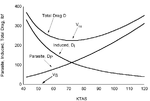Hello Badger
one possibility is that the Soviets used their 85 oct fuel during the tests in Spit VB. I really don't know and unfortunately it seems that the Gordon's and Komisarov's book on British a/c in the Soviet service will not be translated to English. Our member VG-33 most probably knows the answer to the fuel used.
Juha
ADDITION: Geust's and Petrov's Red Stars 4 doesn't give the answer but according to it at least some Spit Mk VBs delivered to SU were powered by Merlin 46s.
one possibility is that the Soviets used their 85 oct fuel during the tests in Spit VB. I really don't know and unfortunately it seems that the Gordon's and Komisarov's book on British a/c in the Soviet service will not be translated to English. Our member VG-33 most probably knows the answer to the fuel used.
Juha
ADDITION: Geust's and Petrov's Red Stars 4 doesn't give the answer but according to it at least some Spit Mk VBs delivered to SU were powered by Merlin 46s.
Last edited:

